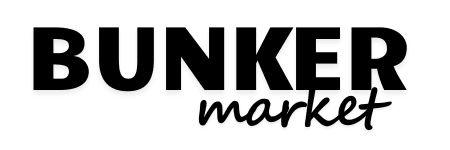SEA-LNG – The maritime industry is making substantial strides in addressing the issue of methane slip, a critical challenge as the adoption of LNG as a marine fuel accelerates. Through collaborative efforts across the value chain, there is a strong commitment to eliminating methane slip for all engine technologies within the next decade.
Currently, 2-stroke diesel cycle engines, which constitute approximately 75% of the LNG-fueled vessel order book, have already effectively eliminated methane slip. For low-pressure engine technologies where methane slip remains a challenge, manufacturers have significantly reduced slip levels from low-pressure 4-stroke engines by over 85% over the past 25 years. It is noteworthy that similar LNG dual-fuel engine technologies used in the heavy-duty vehicle sector have eradicated methane slip. The science is clear, the necessary technologies exist, and ongoing engineering efforts are poised to solve the problem entirely.
Peter Keller, Chairman of SEA-LNG, said “We congratulate the efforts and initiatives such as the Methane Abatement in Maritime Innovation Initiative (MAMII) and the GREEN RAY project. As LNG continues to gain widespread recognition as the current practical and realistic alternative fuel pathway, it is reassuring to see growing evidence that the challenge of methane slip will be eliminated within this decade.”
Momentum for LNG as a marine fuel is growing. According to Clarksons’ data, 109 LNG dual-fuel vessels have been ordered in 2024 up to June. The number of LNG-fueled vessels in operation has surpassed 550, with expectations to double by 2027.
Keller concluded, “There is universal agreement that the science is understood, and we have the necessary tools and technology to abate methane emissions. The final elements of engineering are being worked on. This, combined with the option to transition to net-zero emissions through bio-methane and e-methane, provides shipowners and operators with the confidence that vessels ordered today are future-proofed for the next 25–30 years. This cannot be said for any other alternative fuel right now.”
Table of Contents
Methane Slip Progress Examples
- GREEN RAY Project: As part of this EU-funded initiative, Wärtsilä piloted technologies on the AURORA BOTNIA RoPax ferry, resulting in methane slip reductions of up to 56% in one of its most popular and emission-efficient dual-fuel low-pressure four-stroke engines.
- ROTOBOOST: SEA-LNG’s latest member, a global hydrogen technology company, has developed a unique pre-combustion carbon removal system based on Thermo-Catalytic Decomposition (TCD). This technology, equipped onboard LNG-fueled vessels, cracks the methane molecule into hydrogen and solid carbon. The hydrogen is mixed into the methane fuel feed flow to the engines, directly contributing to lower methane and carbon dioxide emissions, while the valuable solid carbon is captured onboard and off-loaded at the next port call for use in various industrial products.
- MAMII: This initiative has begun piloting exhaust stack methane abatement technologies, including those from Green Instruments and Everimpact. MAMII is also working with regulators to develop a methane measurement, certification, and validation protocol.
- Maran Gas: In September 2023, Maran Gas highlighted the installation of methane measuring technology and Daphne Technology’s after-treatment abatement system, SlipPure, integrated on a dual-fuel LNG carrier. SEA-LNG member Shell was also involved in the project.
- MAN Energy Solutions: In November 2023, MAN announced the launch of the IMOKAT II project to develop after-treatment technology to reduce methane slip from its four-stroke engines.
Lifecycle GHG Emissions Study
According to the 2nd Lifecycle GHG Emission Study on the use of LNG as a Marine Fuel, commissioned by SEA-LNG and SGMF and conducted independently by Sphera, LNG can cut GHG emissions by up to 23%, including methane emissions, across its entire lifecycle, Well-to-Wake, compared to fuel oil.
About SEA-LNG
SEA-LNG is a collaborative industry foundation established to demonstrate the commercial and environmental benefits of LNG as a marine fuel. SEA-LNG members span the entire LNG value chain, including shipowners, port authorities, energy companies, and technology providers, working together to promote LNG as a safe, environmentally, and economically sustainable maritime fuel.
What is Methane Slip?
Methane slip refers to the unintentional release of methane during the combustion process in engines and other equipment using natural gas or LNG as fuel. Methane, a potent greenhouse gas, has a significantly higher global warming potential than carbon dioxide over a 20-year period. Methane slip occurs when a portion of the methane in the fuel escapes into the atmosphere without being burned, contributing to climate change.
Addressing methane slip is critical in maximizing the environmental benefits of LNG as a marine fuel, as it ensures that the reduction in carbon emissions is not offset by the release of methane. Efforts to mitigate methane slip involve advancements in engine technologies and the development of after-treatment systems to capture and convert methane before it can escape.
Source SEA-LNG

